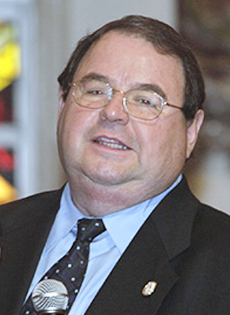
History of the eucharistic celebration X: The Carolingian Era
Monday, July 20, 2020
*Rogelio Zelada
The Holy Roman Empire of the German Nation brought to the Church the richness of new peoples recently converted to Catholicism. The ninth century is the time when medieval currents and traditions manifest themselves in new liturgical formulas and customs.
The kneeling position begins to be understood as an indication of respect and later as a sign of worshiping God. The servants, who normally knelt before the feudal lords, view just as naturally kneeling before the bishop and, above all, before or in the presence of God.
The Germanic languages appear in the official documents of the empire and Latin is not understood by the people. The language barrier grows in the celebration of the liturgical rites, a situation complicated by the ever more widespread tendency to experience a feeling of unworthiness, which distances the faithful from the table of the Lord's Supper.
In addition to this exaggerated attitude are the added demands placed by the Church to the total fast of the fifth century, in this case, that of marital continence. The fear of unworthily receiving Communion grows, increased by ecclesial preaching that is not very attentive to the merciful heart of Christ.
Little by little, the faithful are being deprived of the homily; they do not understand the reading of the Gospel, which is done in Latin; they move away from Communion and from the celebration of the Eucharist, already known as the Mass, since it is understood as a clerical act, a matter that falls exclusively under priestly authority.
The Eucharist has been gradually stripped of its essential character as the agape of Christ's Passover, a sign of communion and a bond of ecclesial charity. It becomes the sacrifice to obtain forgiveness for the sins of the living and the dead. This will lead to the arrival and multiplication of side altars, placed along all the walls and crypts of the temples, to facilitate the celebration of private Masses that, because of the eucharistic fast, had to be celebrated early in the morning. From then on, the priest "officiated" the Mass with his back to the assembly; the ambo, seat of the Word, became a small portable lectern and the seat, the place and sign of the presidency of Christ the Priest, was reduced to a movable stool.
The priest, who became the sole actor in the entire eucharistic liturgy, read the biblical texts that belonged to the ministry of the lector. The sense of mystery and the recitation of the prayer over the offerings was dramatically accentuated, and the priest recited the canon of the Mass in a very low voice. Since he also shared in the common feeling of unworthiness of the faithful, he recited many prayers throughout the eucharistic celebration asking for forgiveness of sins, even during the singing of the Gloria, the Creed and the Sanctus, always doing so in private prayer.
From that impressive collection of prayers for the forgiveness of sins, only the "I confess" has come down to us, which we pray in the Penitential Rite of the Mass, and which formerly included an extensive enumeration of faults and sins.
An inexplicable attraction towards the Old Testament led to the substitution of the leavened bread of the apostolic tradition for the unleavened bread of the Hebrew Passover, a decision contrary to that of the first generations of believers, who were more interested in highlighting the newness of Christ than the uses of the old covenant. This introduction of the use of unleavened bread is still the subject of dispute and great controversy with the Eastern Churches, which have always remained faithful to the liturgical use of leavened bread.


Comments from readers